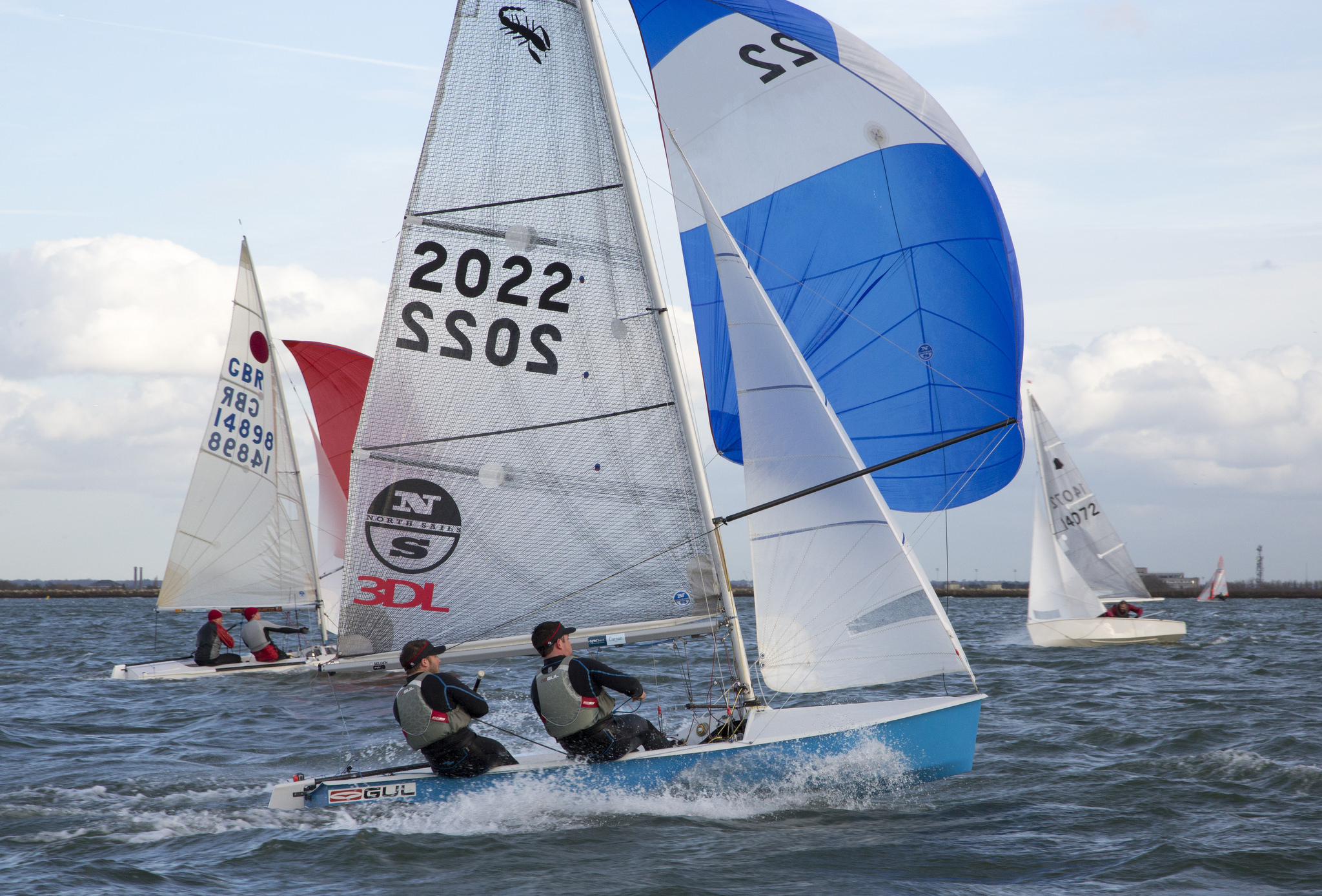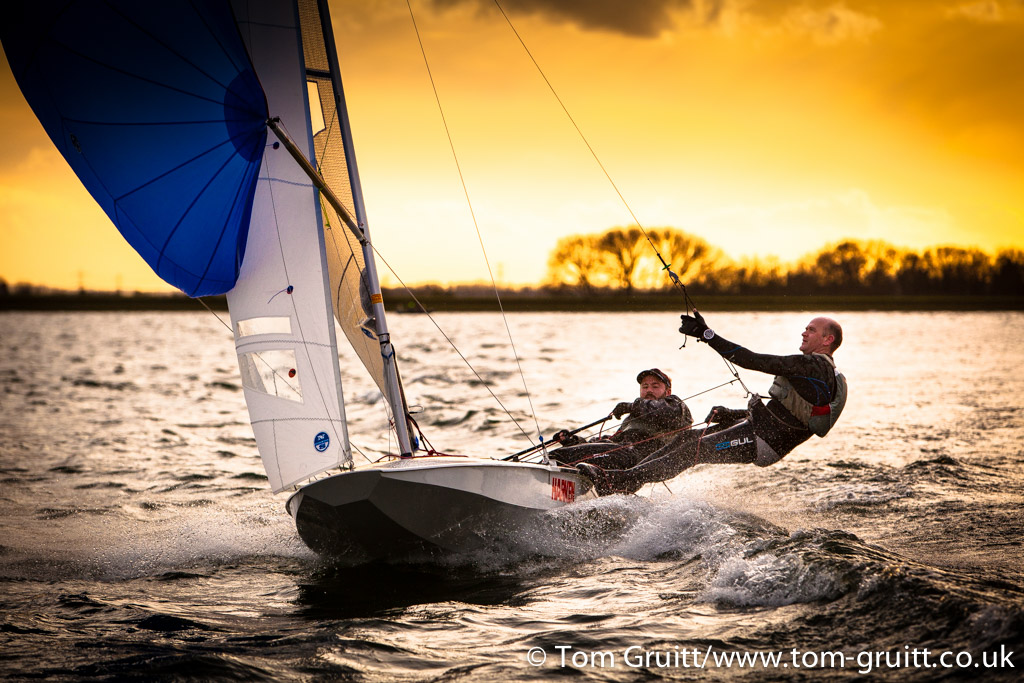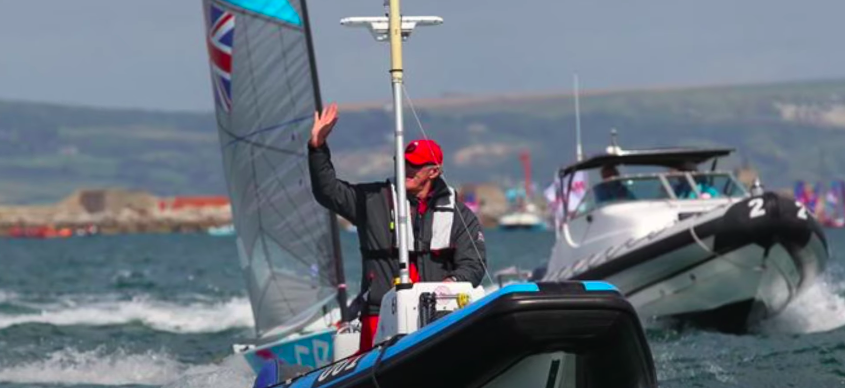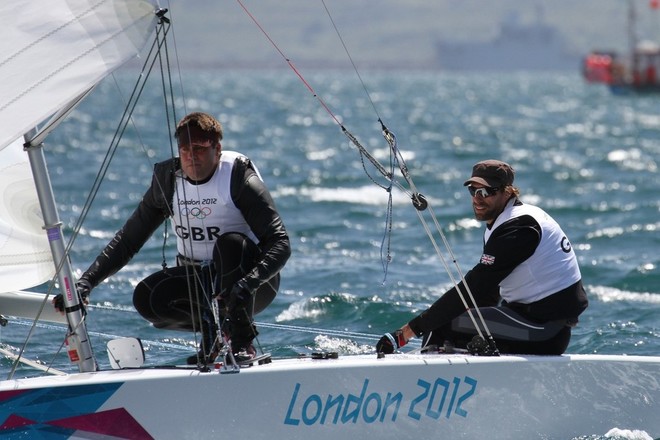Roll Tacks - December 2014
“It’s not about the bike!” The name of Lance Armstrong’s bestselling autobiography. And as we now know, in the case of the great American road racer now stripped of his seven Tour de France victory medals for multiple doping offences, it really wasn’t about the bike!
Whatever Lance’s crimes against humanity and services to the advancement of chemistry, the name of his book remains a great title, and leads me on to this month’s topic: “It’s not about the boat!” If you’ve been following Roll Tacks for any length of time, you’ve probably noticed a common thread to a lot of my writing. How can we increase participation in the sport?
Volvo Ocean Race work in Cape Town prevented me from attending the International Sailing Summit in Amsterdam in November, but it’s great to see so many big names, not least Iain Percy, giving their time and thought to the main subject of the Summit, which this year was focused on: ‘Waking up the sailing industry – how sailing needs to modernise, diversify and develop to attract and retain participants’.
The idea of organising the Summit was born out of organiser Alistair Murray’s frustrations with the International Sailing Federation’s lack of focus on this topic, which you would have thought would be fundamental to the very core of ISAF’s reason for existence. That said, after eight years of very little achieved by ISAF under the tenure of former ISAF President Goran Petersson, the first two years of new boy Carlo Croce’s presidency look more promising. Croce has shown a willingness to shake up the status quo more than his predecessor, something that has been sorely needed in such an introspective, navel-gazing organisation.
ISAF’s obsession with the Olympic Games (and I write as a self-confessed Olympics obsessive), and the youth pathway towards the Olympics, blinds it to the wider interests of the sport that it is supposed to represent. It’s why other events such as the International Sailing Summit and the World Yacht Racing Forum have sprung up in the past decade or so.
One of the speakers at the Summit was Terry Greenwood from British Cycling, which in less than 10 years has seen its membership grow from 19,000 to in excess of 100,000. Indeed, I’m sure many of the readers of Yachts & Yachting are also members of British Cycling, and I can think of many sailors who spend a good many more hours cycling in a month than they do in a boat. Why? Because it’s so easy to get out on a bike and enjoy an hour’s ride, and still have most of the day to do everything else in our busy lives.
I’m a keen biker too, but for me a good sail still beats a good bike ride. However, there’s no getting around the fact that sailing is a time-consuming sport. And for a lot of us, the financial commitment is high, not least because you need to buy a boat, insure it, pay for new sails, and so on. Or do you? We’re so locked into the idea that we need to own our boat in order to go dinghy sailing, perhaps we’re not thinking hard enough about the alternatives. What about a pay-and-play model, like a gym membership where you pay a set fee per month, turn up and use a boat that’s owned and maintained by the sailing club?
Well, for £70 a month, that’s exactly what members at Queen Mary Sailing Club can do, according to Andrew Craig who recently completed his three-year tenure as QMSC Commodore. From what Andrew tells me, this £70 per month pay-and-play scheme has not only been phenomenally successful, but has also helped fill the gaping hole in the membership profile at London’s biggest dinghy club. I’m sure this is by no means unique to Queen Mary, and I’m sure it will chime with many other clubs around the country when Andrew says that QMSC’s youth scene is alive and well, and the number of members in their 40s, 50s, 60s and older is also rolling along nicely. But it’s the 20- and 30-somethings, the ones trying to cope with the cost of a car, trying to get on the property ladder, etc, who have been absent from QMSC, and it’s this age-group that has been drawn to the no-strings appeal of this innovative scheme.
I say ‘innovative’, but maybe you’ve got a similar thing going at your club. However, I’m guessing that the pay-and-play concept remains the exception rather than the norm, and it may not be within the financial means of clubs smaller than Queen Mary to contemplate starting one. But what about forming partnerships with some of the builders, maybe RS, Topper, Laser, Ovington and many others besides? If we can find other ways of re-engaging the ‘missing generation’ back into sailing, then it’s going to be good for all of us.
Whatever Lance’s crimes against humanity and services to the advancement of chemistry, the name of his book remains a great title, and leads me on to this month’s topic: “It’s not about the boat!” If you’ve been following Roll Tacks for any length of time, you’ve probably noticed a common thread to a lot of my writing. How can we increase participation in the sport?
Volvo Ocean Race work in Cape Town prevented me from attending the International Sailing Summit in Amsterdam in November, but it’s great to see so many big names, not least Iain Percy, giving their time and thought to the main subject of the Summit, which this year was focused on: ‘Waking up the sailing industry – how sailing needs to modernise, diversify and develop to attract and retain participants’.
The idea of organising the Summit was born out of organiser Alistair Murray’s frustrations with the International Sailing Federation’s lack of focus on this topic, which you would have thought would be fundamental to the very core of ISAF’s reason for existence. That said, after eight years of very little achieved by ISAF under the tenure of former ISAF President Goran Petersson, the first two years of new boy Carlo Croce’s presidency look more promising. Croce has shown a willingness to shake up the status quo more than his predecessor, something that has been sorely needed in such an introspective, navel-gazing organisation.
ISAF’s obsession with the Olympic Games (and I write as a self-confessed Olympics obsessive), and the youth pathway towards the Olympics, blinds it to the wider interests of the sport that it is supposed to represent. It’s why other events such as the International Sailing Summit and the World Yacht Racing Forum have sprung up in the past decade or so.
One of the speakers at the Summit was Terry Greenwood from British Cycling, which in less than 10 years has seen its membership grow from 19,000 to in excess of 100,000. Indeed, I’m sure many of the readers of Yachts & Yachting are also members of British Cycling, and I can think of many sailors who spend a good many more hours cycling in a month than they do in a boat. Why? Because it’s so easy to get out on a bike and enjoy an hour’s ride, and still have most of the day to do everything else in our busy lives.
I’m a keen biker too, but for me a good sail still beats a good bike ride. However, there’s no getting around the fact that sailing is a time-consuming sport. And for a lot of us, the financial commitment is high, not least because you need to buy a boat, insure it, pay for new sails, and so on. Or do you? We’re so locked into the idea that we need to own our boat in order to go dinghy sailing, perhaps we’re not thinking hard enough about the alternatives. What about a pay-and-play model, like a gym membership where you pay a set fee per month, turn up and use a boat that’s owned and maintained by the sailing club?
Well, for £70 a month, that’s exactly what members at Queen Mary Sailing Club can do, according to Andrew Craig who recently completed his three-year tenure as QMSC Commodore. From what Andrew tells me, this £70 per month pay-and-play scheme has not only been phenomenally successful, but has also helped fill the gaping hole in the membership profile at London’s biggest dinghy club. I’m sure this is by no means unique to Queen Mary, and I’m sure it will chime with many other clubs around the country when Andrew says that QMSC’s youth scene is alive and well, and the number of members in their 40s, 50s, 60s and older is also rolling along nicely. But it’s the 20- and 30-somethings, the ones trying to cope with the cost of a car, trying to get on the property ladder, etc, who have been absent from QMSC, and it’s this age-group that has been drawn to the no-strings appeal of this innovative scheme.
I say ‘innovative’, but maybe you’ve got a similar thing going at your club. However, I’m guessing that the pay-and-play concept remains the exception rather than the norm, and it may not be within the financial means of clubs smaller than Queen Mary to contemplate starting one. But what about forming partnerships with some of the builders, maybe RS, Topper, Laser, Ovington and many others besides? If we can find other ways of re-engaging the ‘missing generation’ back into sailing, then it’s going to be good for all of us.
Related Articles

Late switch proves Bloody fortuitous for Gillard and Anderton
Read More
 Tom Gillard & Richard Anderton’s change of horse from Five-Oh to Fireball pays dividends at a blustery Bloody Mary
Tom Gillard & Richard Anderton’s change of horse from Five-Oh to Fireball pays dividends at a blustery Bloody Mary

Big Breeze for the Bloody Mary
Read More
 A chance for the fast boats to shine at this Saturday’s pursuit race classic?
A chance for the fast boats to shine at this Saturday’s pursuit race classic?

Roll Tacks - 15 October 2014
It’s less than two years to the next Olympic Games in Rio de Janeiro. Speaking to Olympic manager at the RYA, Stephen ‘Sparky’ Park, it’s going to be a challenging regatta for many different reasons.
Read More

The Secret Weapon behind GBR's Olympic Success
Read More

Mark Jardine talks to Olympic Sailing 'Coach To The Stars' David Howlett, the secret weapon behind the runaway success of GBR's domination of the Finn class.

Bart Simpson Interview - Part 2
Read More

By the end of 2002, Bart’s sailing and his results had gone downhill. “I ended up trying to beat Ben rather than trying to sail my best.” He took himself to a psychologist. “I wasn’t thinking the right things. He taught me to refocus on sailing the best you can rather than trying to beat anyone else. He helped get my brain back on track, and I made some steps forwards, focusing on improving my own performance rather than worrying about anyone else.”
